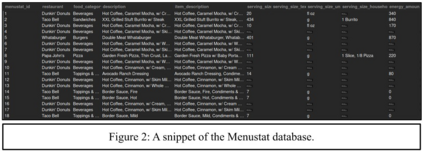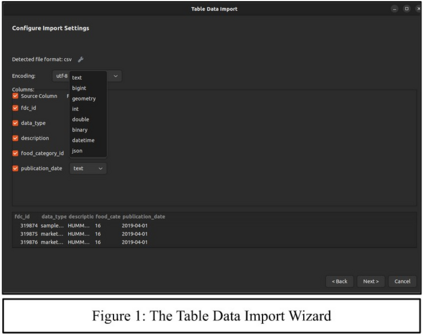Studies with the primary aim of addressing eating disorders focus on assessing the nutrient content of food items with an exclusive focus on caloric intake. There are two primary impediments that can be noted in these studies. The first of these relates to the fact that caloric intake of each food item is calculated from an existing database. The second concerns the scientific significance of caloric intake used as the single measure of nutrient content. By requiring an existing database, researchers are forced to find some source of a comprehensive set of food items as well as their respective nutrients. This search alone is a difficult task, and if completed often leads to the requirement of a paid API service. These services are expensive and non-customizable, taking away funding that could be aimed at other parts of the study only to give an unwieldy database that can not be modified or contributed to. In this work, we introduce a new rendition of the USDA's food database that includes both foods found in grocery stores and those found in restaurants or fast food places. At the moment, we have accumulated roughly 1.5 million food entries consisting of approximately 18,000 brands and 100 restaurants in the United States. These foods also have an abundance of nutrient data associated with them, from the caloric amount to saturated fat levels. The data is stored in MySQL format and is spread among five major tables. We have also procured images for theses foods entries when available, and have included all of our data and program scripts in an open source repository.
翻译:研究的主要目的是解决饮食紊乱问题,研究的重点是评估食品的营养含量,专门以热量摄入为主。这些研究可以注意到两个主要障碍:第一,每个食品的卡路里摄入量是从现有数据库计算出来的;第二,热量摄入作为营养含量的单一度量的科学意义;通过要求现有数据库,研究人员不得不找到综合食品食品以及各自营养素的来源。仅这一搜索是一项艰巨的任务,如果完成这一搜索往往导致需要付费的API服务,这些服务费用昂贵且不通俗。这些服务是昂贵的,无法满足的,将资金用于研究的其他部分,只能提供一个无法修改或促进的不通俗数据库。在这项工作中,我们引入了美国食品局食品数据库的新配置,该数据库既包括食品商店中发现的食品,也包括餐馆或快餐场所中发现的食品。目前,我们从美国大约18 000个品牌和100个餐馆中累积了大约150万个食物条目,这些食物目录的储存量和主要食品的储存量也包含我们所储存的五种食物的储存量数据。









